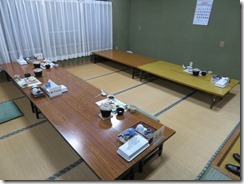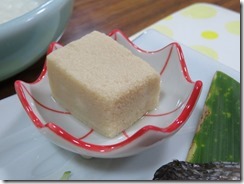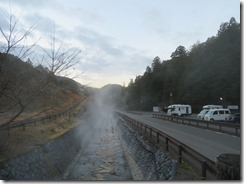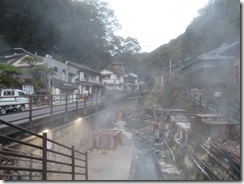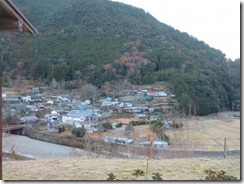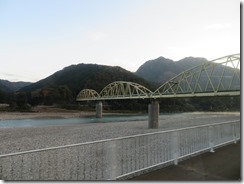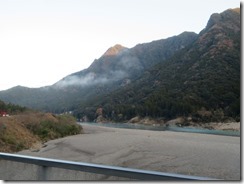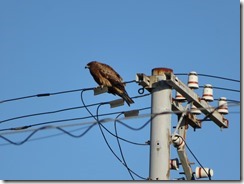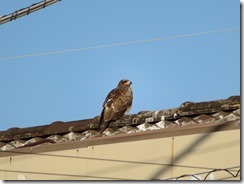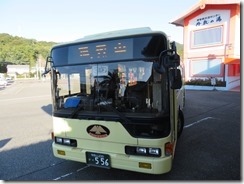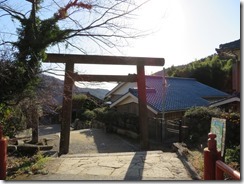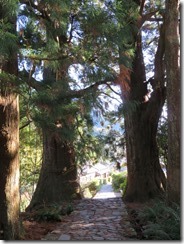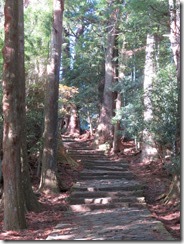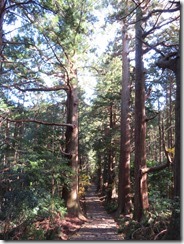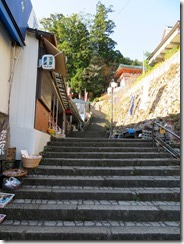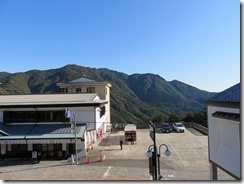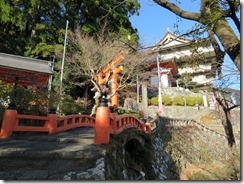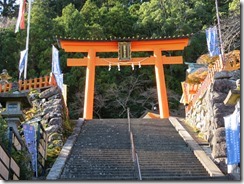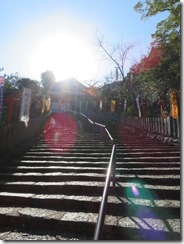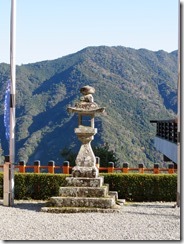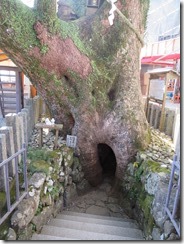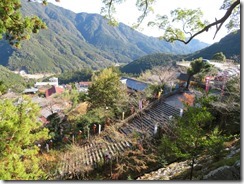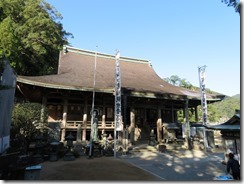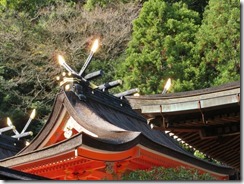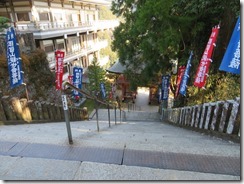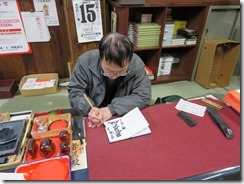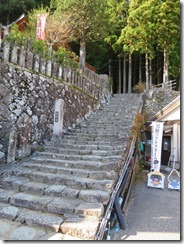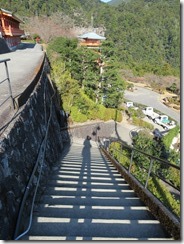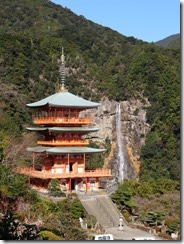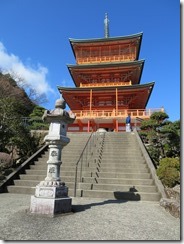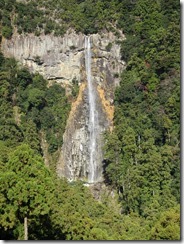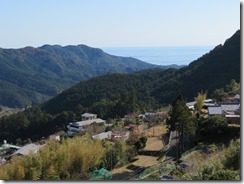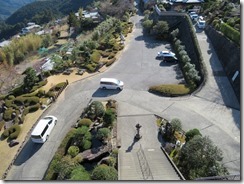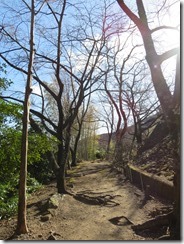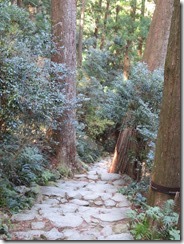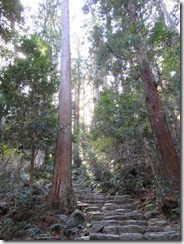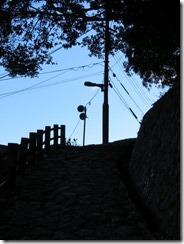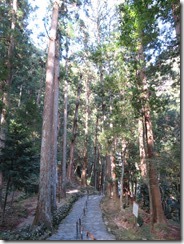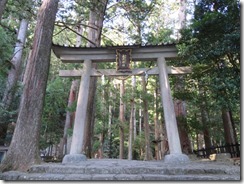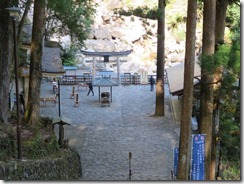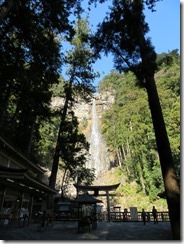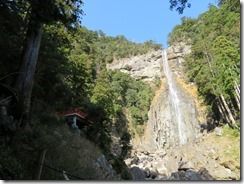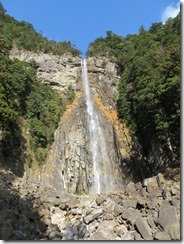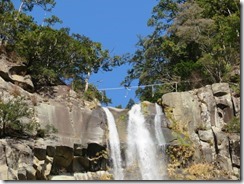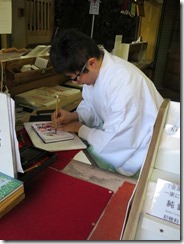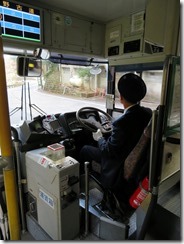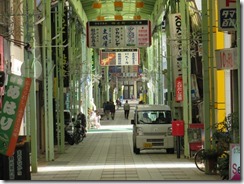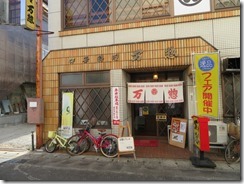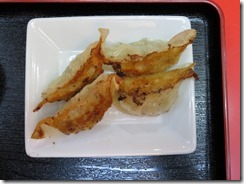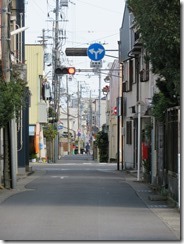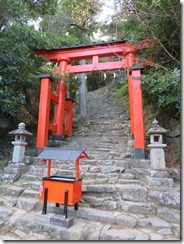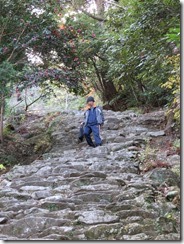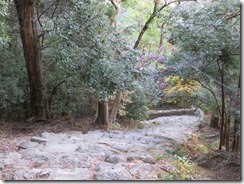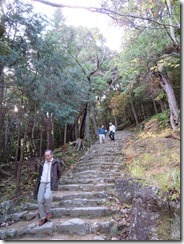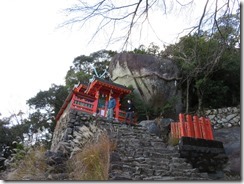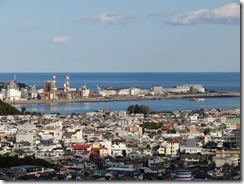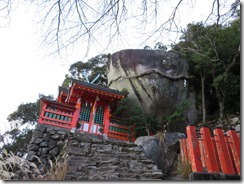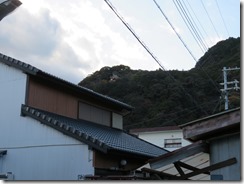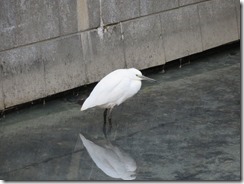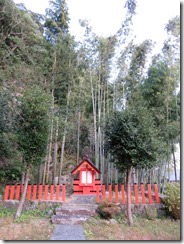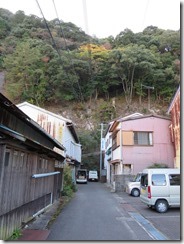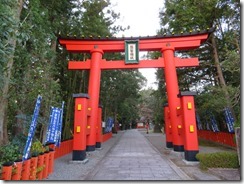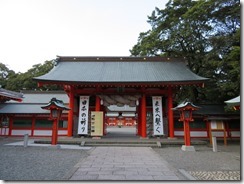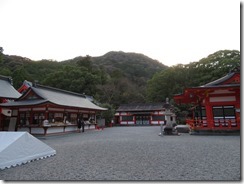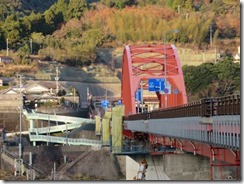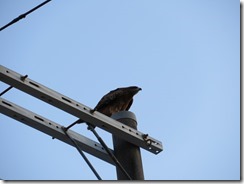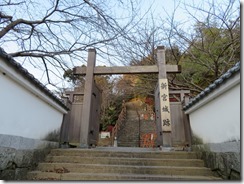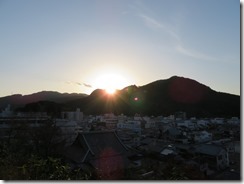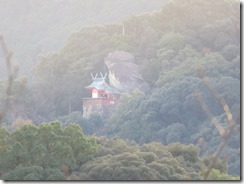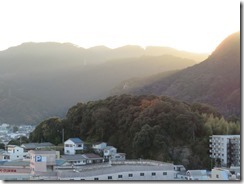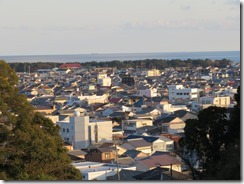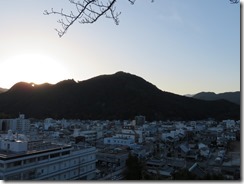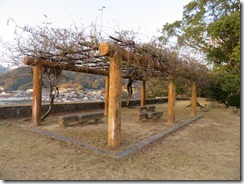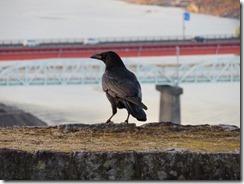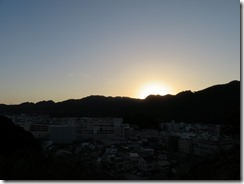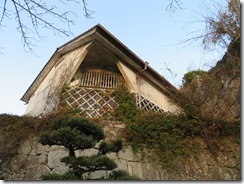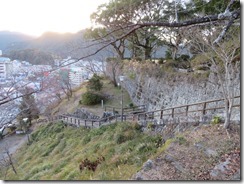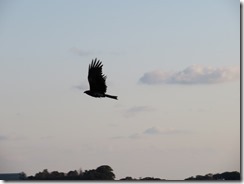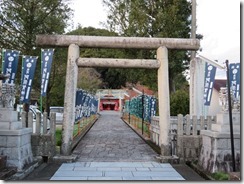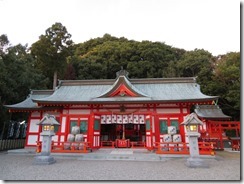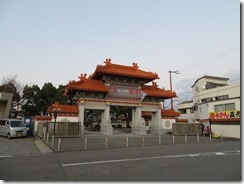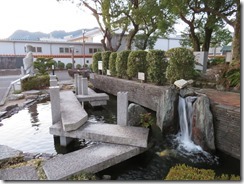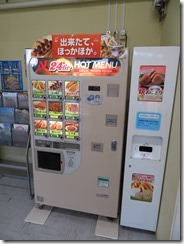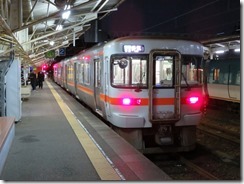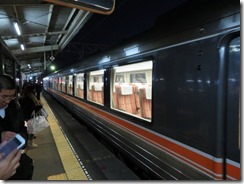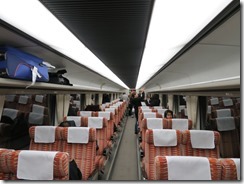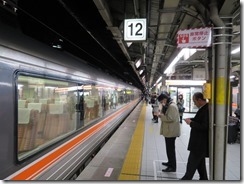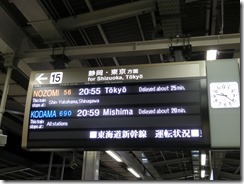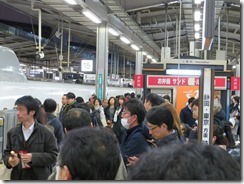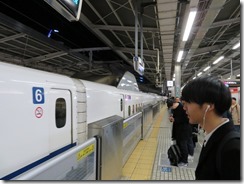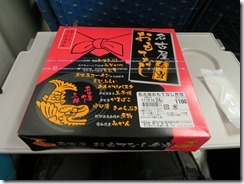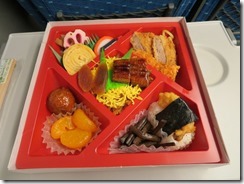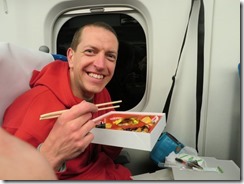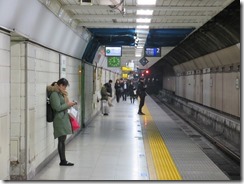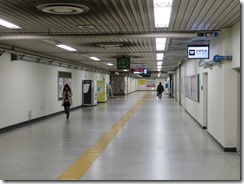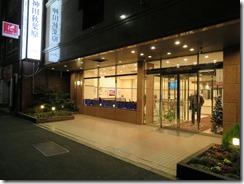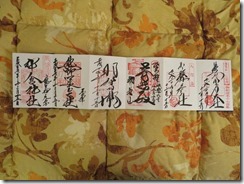So, the time has come at last. Let’s have a little chat about Japanese toilets. I’m sure everyone already knows how fancy and shiny they are, with built in bidets and whatnot. Or, as they call them here, washlets – “bidet” is the word used here for the ladies’-only function. Let me just say, I find using the washlet just plain feels weird, though I guess it’d be a different matter if I were raised on it. It’s pretty much vital in some of the bathrooms I’ve used here, though, which are so small I can barely even swing a ca, much less a whole cat. Or turn around with bumping my backside on the door handle.
But anyway, what I wanted to talk about today was heated seats. Lemme say that again: heated seats. In Australia, sitting down to a warm seat is kinda nasty, because it reminds you that someone else just stood up. Here, though, especially in this cold, they’re so incredibly welcome. Every toilet I’ve used here so far has a heated seat, even the toilets in the most rural of temples (for the Western-style toilets, that is – Japanese-style don’t have seats). They’re kept kinda slightly warm all the time, but they can sense when you sit down and ramp up the heating when you do. And somehow, even in a bathroom that’s practically open to the night air outside, sitting on a heated seat magically keeps you warm throughout. Don’t ask me how that works. It’s magic.
After yesterday’s lovely day of rest, today wound up being my longest day this trip (aside from waking up in the middle of the night to fly here, that is). Putting my stay in Yunomine after Kyoto instead of before as I described yesterday has the unfortunate side effect of having to travel from the Kii Peninsula back to Tokyo in one slab, a six-hour trip by the most direct trains. However, before I did that, I absolutely had to visit Nachi Falls, basically my main reason for visiting here.
I worked everything out before I came using Hyperdia and the area’s bus timetables (provided by the Tanabe City Tourism Bureau website – they even included one chart showing the best connections to get from the Hongu area to Nachi Falls, by combining three different bus schedules). If I caught the very first bus of the day from Yunomine Onsen, at 6:55am, I’d arrive at Nachi at 9:14 (after changing buses at Shingu and Nachi Stations, stashing my luggage in the lockers at Shingu on the way through). Then I could spend two and a bit hours exploring Nachi, before getting the 11:45 bus back to Shingu Station (with a change at Nachi Station) at 12:36, just in time for the 12:44 Nanki Express back to Nagoya, where I’d change for a shinkansen for Tokyo, arriving at around 6pm-ish.
A little complex, yes. The deal is, it required perfect to-the-minute timing for rural buses, with no missed connections. And even if everything worked fine, I’d have precisely eight minutes at Shingu Station to retrieve my luggage from the lockers and book a ticket on the express. Missing that train would add four hours to my journey, because the next train was the Kuroshio express, leaving two hours later, and taking two hours longer (because it runs the long way around the peninsula, back to Shin-Osaka). Alternately, the next Nanki left another three hours after that, but since it was the shorter trip to Nagoya, I’d arrive back in Tokyo only one more hour later.
I later discovered a few sights in Shingu town that I would like to see, so I eventually decided to settle for the later Kuroshio, meaning I’d arrive in Tokyo at around 10pm. Due to a curious quirk in the way the bus and train timetables meshed, though, I’d still have to take the same buses from Yunomine, and the same buses back from Nachi Falls – mostly because after the 6:55am bus, the next bus from Yunomine to Shingu wouldn’t leave until 8:50, almost two hours later.
Whew. Four paragraphs into today’s activities and I haven’t actually even started talking about today’s activities.
I woke up at 5:30am in order to finish packing everything before breakfast at 6. I was the only person eating at 6, but there were three other places laid out, and a second person came in some time later (didn’t look at what time that was) so I don’t feel quite so guilty as I did earlier over requesting a 6am breakfast time. Most of the dishes were the same, including that sponge making a reappearance.
Leaving the minshuku at 6:50-ish, long before the sun rose over the mountains, the river through the town was most definitely steaming. Hopped on the bus. I tried to take some photos as we went, but it was a little difficult. Here and there were patches of cloud hovering in the valleys, and there was even mist rising off the regular cold-water rivers in places. I caught a glimpse of the Senninburo in Kawayu as the bus passed through, but I was sitting on the wrong side, so I wasn’t able to grab a photo. In general, the bus had a bit of a habit of jogging my elbow right as I took the photo, like it was deliberate.
Soon arrived at Shingu Station. One of the little stresses in the planning stages of this phase of the trip was that there wouldn’t be any luggage lockers available at Shingu – plan B was to try Nachi Station instead, but there’s much fewer lockers there, and not a huge amount of time between bus transfers. Turns out my fears were for naught – quite far from there being no lockers empty, there were in fact no lockers full. Shingu Station had a quite a few birds of prey hanging around, though I never did work out what kind of bird, exactly.
Hopped onto the next bus as it arrived. The driver helpfully pointed out as I got off where I needed to go for the bus to Nachi Falls (though the Tanabe City bus timetable also had a map showing the same) and I caught that one too. Hopped off at the Daimonzaka stop to start walking up Daimonzaka – the bus driver again helpfully pointed the way (turns out it was about fifty metres back the way we came).
A side note on catching buses here, all the bus stops here have names, which are announced by a pre-recorded voice over the bus’ PA, which is useful – for the three bus lines which stop in Yunomine, these announcements are even repeated in English. However, not all bus stops are listed on the bus timetables, so you need to pay attention. If noone is waiting to board or has signalled they’d like to get off, the driver just drives past the stop (allaying one of my other fears for this trip – buses turn out to be early more often than late).
Ticketing is done as follows: when you board, you do so through the back door, taking a numbered ticket (which refers to the stop you boarded at). At the front of a bus is a screen showing all of the numbers, and how much they’d have to pay if they got off at the next stop. When you get off, you basically just toss your money in a box by the driver, and leave via the front door. The money box also has a change machine if you don’t have exact change. Noone’s actually checking how much you put in, though – I think I might have underpaid one bus, because I put my hand in my pocket after getting off, and found a coin still in there. But anyway, there you have it.
So, Daimonzaka. Meaning “Big Gate Hill” (though I’m not sure if that’s a big hill with a gate or a hill with a big gate – the former I suspect), it’s the last little bit of the Nakahechi walking route (which is traditionally walked west to east). It’s not a section in its own right, mind, simply the last little bit of the Ogumotori-goe section. For me, walking east to west, it was a long, looong uphill staircase.
Very pretty, though. This is another one of those places that are in all of the tourism advertising, especially with people dressed in Heian-era costumes (you know, the domed straw hat with the veils, kimono and so forth). You can actually rent these costumes from a shop at the start of the walk, but since I wasn’t planning on walking back this way (among other reasons) I passed on it. The stone-paved path was surprisingly uneven, though – I’d have thought after centuries of pilgrims, it’d be worn mirror-smooth by now.
I finally reached the top of the Daimonzaka into the town of Nachisan (Mount Nachi) and found more stairs. And then some more. And a few more for good measure.
Eventually, I reached Kumano Nachi Taisha, the second of the Kumano Sanzan. With more stairs. The view from the shrine courtyard was absolutely spectacular. Sadly, it seems like the main shrine building is undergoing renovations, but it was still a nice place. Wonder if the shrine priests commute up those stairs every day. The grounds also include an 850-year-old sacred camphor tree – it’s possible to enter the tree, but a sign (in Japanese) posted by the opening seemed to be saying that it cost money, so I didn’t (though noone was checking, and from what I’ve been able to find on the internet now, I may have been mistaken anyway, so I’m slightly regretting that choice).
Right next to Kumano Nachi Taisha is a buddhist temple, Seiganto-ji, which is also included in the Kumano Sanzan. In fact, it’s so closely related to Kumano Nachi Taisha that the two together can be regarded as one of the few remaining jingu-ji, or shrine-temples, after the forcible separation of Biddhism and Shinto during the Meiji Restoration.
But the main point of worship for both temple and shrine (albeit for different reasons) is Nachi Falls, right at the top of the valley. With a height of 133 metres, it’s Japan’s highest single waterfall, and included as part of the UNESCO listing. Seiganto-ji has a three-storeyed pagoda near-ish to the waterfall, and there’s a subordinate shrine named Hirou-jinja right at its foot. The spectacular shot of the pagoda with the waterfall in the background is another one of those shots that’s in all the tourism brochures, and I made sure to get the shot myself.
As I approached the pagoda, I was surprised you could climb it (for a fee), so I did. It’s got a lift inside, so I don’t think it’s an ancient construction, though I clinbed the stairs. I admired the view from top for a while, taking some pretty pictures – and was quite surprised to realise that I can see all the way to the ocean. Decided to be lazy and take the lift down – oddly, even though it’s called a three-storey pagoda, according to the lift panel, the top floor is level 4. It does go 1, 2, 4, though…
Came back down and headed for the waterfall, down some fairly steep and fairly uneven stairs. Reached the shrine at the bottom, and paid to enter the viewing platform almost right at the foot of the waterfall. Pretty impressive. Pretty rainbow.
Finally, everything done, I headed to the nearby bus stop. To my absolute astonishment, considering my track record, I was actually finished in time for the 11:45 bus, without even rushing or staring at the clock the whole time (though I did have to hot-foot the last little bit up from the waterfall). I was fully prepared to have to wait for the 1:00 bus.
So, got the bus back to Shingu, via Nachi. There were a few little sights I would have liked to get off and see en route, like another shrine up a small mountain. Or at least, sights I would have liked to photograph, like a bus stop with a single wheelie chair instead of a bench seat (well, I found the juxtaposition amusing, anyway). I also discovered that another Buddhist temple related to the Kumano Sanzan is located in Nachi near the stop where I changed buses – I almost went to see it by pure coincidence, but I only had six minutes to spend there.
Arrived back in Shingu. My first target here was Kamikura-jinja, at the south end of town. I realised far too late that I could have hopped off the bus at stop near Kamikura, and didn’t have to stay on until the station (only came to that realisation one stop before the station). Went wandering for a place to have lunch, though, since it was 1pm by this point. I started by walking down a covered shopping street, but there weren’t any eateries there (aside from an Okonomiyaki place just outside the start that looked closed). Coming back up a parallel street, I encountered a Chinese restaurant, so I went in there, to see Japan’s take on Chinese food. I had the lunch set, which consisted of Chuuka-don (=Chinese-style stir fry on rice), a bowl of soup (basically short soup without the shorts), and a half-order of gyoza (four instead of eight). Most tasty. Most affordable.
All sated, I walked to Kamikura-jinja. Or I tried to, except Google took me to the base of the cliff that it’s built on top of, rather than the entrance. Made it to the right place on my second attempt, though. Popped into a public restroom for a just-in-case visit, and it’s the first time I’ve actually seen a bathroom with the toilet control panel translated into English. The building itself was kinda weird too, positioned basically in the playground of a school, but with fences up so that it can only be accessed from the street.
But anyway, headed up to Kamikura-jinja. The steps were so incredibly steep. And uneven. I grabbed a walking stick out of the rack at the bottom to help me up, but quickly realised the steps were so steep that even the stick wasn’t helping, so I parked it behind a wall so that I could grab it again on the way down. There’s apparently 538 in total. I was a little bit amused at how most of us seemed to be struggling at it, but here and there there’d be a little old man or lady strolling down with their hands behind their backs.
Buuuut, spectacular view over the town of Shingu at the top. The object of worship at this shrine is Gotobiki-iwa, a huge rock overhanging the small shrine building. Supposedly it’s where the Kumano gods first touched down in the Shingu area, and it’s also part of the UNESCO listing.
Headed back down, and strolled over to where I could get a shot of the shrine building from the ground. It was a lot further from the entrance horizontally than I thought it was, also also quite high. After that, I went strolling through the streets to my next destination, passing a whole lot of temples on the way.
My next destination was Kumano Hayatama Taisha, the third of the Kumano Sanzan. Hatayama Taisha was originally built at Kamikura-jinja, but was later moved to its current location at the mouth of the Kumano River – which is to say, the same river that passes Kumano Hongu Taisha. Actually, the name of the town, Shingu, meaning “new shrine”, is in reference to this move. One of the practices in ancient times was to walk to Kumano Hongu Taisha, then hop on a boat to Kumano Hayatama Taisha, then walk around the coastline to Kumano Nachi Taisha (though the more adventurous, and less lazy, could walk from Hongu to Nachi and then to Hayatama).
Once I was done there, I went to see the ruins of Shingu Castle. The actual buildings are all gone, but the fortified sconce remains, towering over the city below. I actually found myself climbing slightly ahead of the shadow of the mountins as the sun set behind them, rather like that scene at the climax of The Mummy Returns, only in reverse (and without that goof where the shadow comes from the wrong side). Even managed to get a shot of Kamikura-jinja from there. As the sun set behind the mountain, it shone through a gap in the trees, which resulted in a silouette remakably like a man lying down (with the sun forming the eye).
After sunset, I decided to visit another nearby shrine called Asuka-jinja. I’d actually missed two stamps today, even though they’re marked on my map – one at Tafuke-oji near the start of the Daimonzaka, and one at Kamikura-jinja – and I was hoping the Asuka-jinja stamp would fill the hole in my heart. It didn’t really, though the head priest there started up a conversation with me in English, and offered to show me around if I ever found myself coming that way again. (I thought of asking about a goshuin, and again, while I’m sure he would have done it if I’d asked, he was in the middle of tidying up for the day).
On the way back to Shingu Station, I dropped by Jofuku Park. Seems like some kind of tiny Chinese garden – actually, I’d noticed the front gate earlier in the day, but hadn’t realised what it was.
Finally reached the station again, and booked a ticket for the Nanki express to Nagoya – i.e. my third possible option for choice of trains, the one that has me arriving at my hotel in Toyko after 11pm. So, late night for me. Sadly, as part of the route runs on non-JR rails, it’s not completely covered by my JR Pass. Somehow, I’d convinced myself that the surcharge would be 800 yen, but when I set aside 800 yen from my money, I discovered not much remained. I thought I’d brought far more cash than I would need with me to Yunomine, but at Hayatama Taisha today I found myself using my last note, leaving me with literally just pocket change. I can pretty much only use Seven Bank ATMs (found in 7-11 convenience stores) to access my travel card, and it turns out there’s not one 7-11 in all Wakayama Prefecture. I gave the Lawson across the road a stab, but it didn’t work.
Sooo… no money for dinner, at least until I could get back to Nagoya and find a 7-11. Shingu Station had the first hot-food vending machine I’d seen too, but I couldn’t even afford that. Aaaand then it turned out the non-JR line surcharge was only 510 yen, not 800, so I could have afforded something after all. I’ve even wound up with a whole lot of extra shrapnel, because he only flashed me the number, and I didn’t realise he was giving me 90 yen in change until he handed it to me. Sad face. I did, fortunately, have my leftover Meltykisses to snack on.
Since I started my trip back to Tokyo at 5:30pm, the entire trip happened in darkness. That’d be the other downside of starting at 5:30. The Nanki train’s full name is Nanki Wide-view. Means it’s got big windows, and it sure does. And for some reason, the seats are up on a step, rather than being down on the floor like they are on every other train I’ve been on so far. But… it’s kinda dark outside.
On the plus side, I could make use of travel time by blogging while on the train, to upload back at my hotel in Tokyo. So yeah, I’m writing this on the train. If there’s any weird confusion over tenses, that’s why.
Or rather, I was writing on the train, but I looked up after writing that bit and suddenly realised I’d been writing for almost the entire three-hour trip on the Nanki, and we were just about to arrive in Nagoya. So I packed up and hopped off. I had been hoping to get the photos added into this post while on the train, but I guess not.
I booked my seat on the shinkansen for Tokyo, which’d be leaving in about half an hour, giving me just enough time to race across the road to the 7-11 (after first walking the wrong way – Google’s directions aren’t awesome when you’re standing inside a station), then race back to the station and grab a bento from a shop just inside the door. I went for a Nagoya specialty bento.
Then I headed up for the platform and… the “next train” board showed a train that was due to leave half an hour ago. Just as I was starting to think maybe the board was just frozen, the matching train showed up at the platform. The shinkansen was running about half an hour late. I almost felt as if I’d dozed off on the Nanki and woken up in the Twilight Zone.
Fortunately the trains had bunched up a bit, so each successive train was a little bit less late than the last, but my train was still about a quarter hour late. On the plus side, it did give me a bit more time to go look for the station stamp – though according to the guy, Nagoya doesn’t have one. Finally managed to board and start eating at about a quarter to ten. Had a brief chat with my seat-mate, who kindly took a photo of me eating dinner. He hopped off at the next stop, Shizuoka. Spent the rest of the shinkansen trip trying not to fall asleep instead of working on the blog.
Eventually, the train arrived at Tokyo. At Tokyo, I transferred to the Sobu (Rapid) Line. Weird thing about to Sobu Line, the rapid express trains go through Tokyo Station, while the regular ones do not. I had originally been thinking that to reach my hotel I’d have to take the Yamanote Line to Akihabara, then change to the Sobu Line for Asakusabashi Station, and walk five minutes from there to my hotel. Turns out I can just get the Sobu (Rapid) Line from Tokyo Station to Bakurocho, and one of the exits from Bakurocho is practically on my hotel’s doorstep.
The train was absolutely packed. Like, rush-hour just-short-of-needing-pushers-on packed. Guess everyone was heading hope from their Friday night partying. Managed to squeeze on, suitcase and all. Bakurocho was pretty empty, though – guess most of the passengers were heading to Chiba. There was noone at the manned ticket gates on that exit of Bakurocho station, though, so I waved my JR Pass at the security cameras and climbed over the gate.
Arrived at the hotel just minutes before midnight. I’m back in Toyoko Inn for my last two nights here. Think I’m probably about ready for some warmer weather, but I’m not sure I wanna leave Japan…
Today’s photo count: One thousand two hundred.
Today’s pedometer count: 22,081 steps for 16.6km
Today’s goshuin count: Six. From the right, Kumano Nachi Taisha, some kinda special Yatagarasu version of same (Yatagarasu, the three-legged crow is a symbol of the Kumano Sanzan), Seiganto-ji, Hirou-jinja, Kumano Hayatama Taisha, and Kamikura-jinja (which I also got at Hayatama Taisha).
Today’s stamp count: Nine. Seiganto-ji, a special Nachisan version of same, a large and rather faded version of same, Kumano Nachi Taisha Yatagarasu version, Nachi Taisha regular version, Hirou-jinja, Kumano Hayatama Taisha, Asuka-jinja, Shingu Station.

